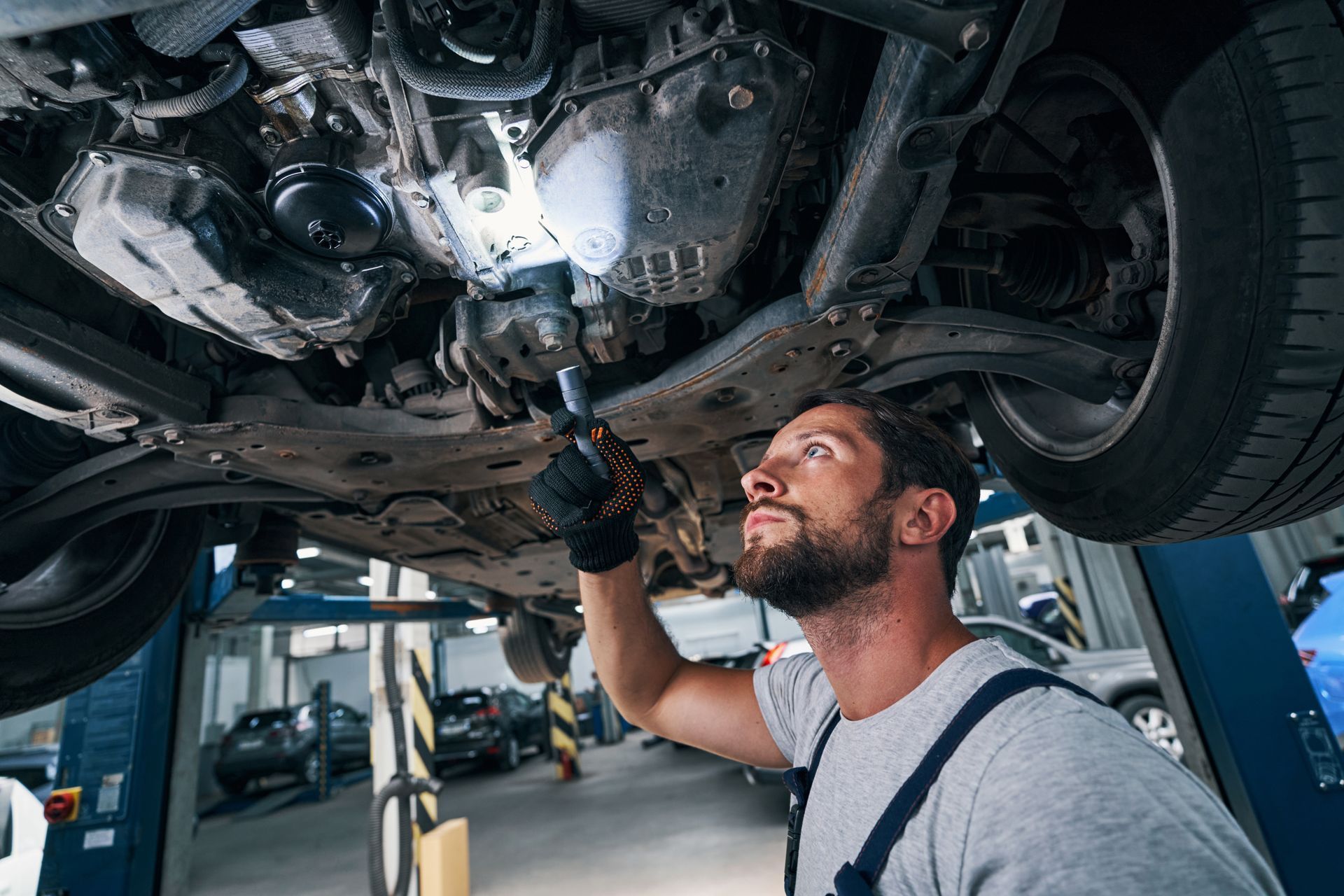April 7, 2025
For fleet operators, keeping vehicles in peak condition isn’t just about maximizing performance—it’s about protecting the bottom line. One of the simplest yet most overlooked maintenance tasks is tire rotation. At Garage 850 in Pensacola, FL, we work with fleet managers every day to help them understand how small, consistent steps—like timely tire rotations—can extend tire life, improve safety, and enhance vehicle reliability. So, how often should fleet vehicles get a tire rotation? Let’s dive into the details and explore how proper rotation practices can make a big difference for your fleet’s performance and reputation. Why Tire Rotations Matter for Fleets Tires don’t wear evenly. Depending on whether your vehicles are front-wheel drive, rear-wheel drive, or all-wheel drive, certain tires will naturally experience more stress than others. For fleet vehicles that are constantly on the road—hauling goods, transporting people, or navigating stop-and-go traffic—uneven wear can happen fast. Routine tire rotations help distribute wear more evenly across all four tires, which offers several important benefits: Longer tire life: Even wear helps delay the need for costly replacements. Improved fuel efficiency: Balanced tires reduce rolling resistance. Better handling and safety: Uneven wear can compromise traction, especially in wet or emergency braking situations. Lower maintenance costs: Avoids premature suspension and alignment issues caused by imbalanced tire wear. At Garage 850, we help Pensacola-area businesses stay on top of these essential services with tailored fleet maintenance programs that prioritize safety and performance. Recommended Tire Rotation Intervals for Fleet Vehicles In general, most auto manufacturers and tire experts recommend rotating tires every 5,000 to 7,500 miles. For fleet vehicles—especially those with heavier loads or frequent stop-and-go use—we suggest sticking to the lower end of that range. Here’s a breakdown of rotation frequency based on vehicle usage: Light-duty delivery vehicles (city routes): Every 5,000 miles Medium-duty work vans or trucks: Every 4,000–5,000 miles High-mileage highway fleet vehicles: Every 6,000–7,000 miles Emergency or specialty vehicles (e.g., utility vans, shuttle buses): Every 4,000 miles or sooner depending on wear patterns Of course, your specific interval may vary depending on vehicle type, driving conditions, and tire brand. That’s why Garage 850 performs a thorough inspection with every fleet service visit—we don’t just follow a calendar, we follow the condition of your tires. Signs Your Fleet Vehicles Are Overdue for a Tire Rotation If tire rotations are missed, you’ll often see visible signs of uneven wear or feel a difference in ride quality. Watch out for: Vibration while driving (especially at highway speeds) Uneven tread depth from one side of the vehicle to the other Pulling to one side even after alignment Increased road noise from tires These symptoms aren’t just nuisances—they're red flags that could indicate more serious issues down the line, such as suspension damage or alignment drift. Early detection and regular rotation help avoid expensive repairs later. Types of Tire Rotation Patterns Not all vehicles use the same rotation pattern. At Garage 850, we tailor rotation strategies to your fleet’s specific needs, using the following methods: Forward Cross: Common for front-wheel-drive vehicles—front tires move to rear, rear tires cross to front. Rearward Cross: Used for rear-wheel and 4WD vehicles—rear tires move forward, front tires cross to the back. X-Pattern: Tires swap diagonally—front right to rear left, etc. Useful for non-directional tires. Side-to-Side: For performance or directional tires that can’t be swapped front-to-back. Our technicians assess each fleet vehicle’s drivetrain, tire type, and wear pattern before performing a rotation, ensuring optimal performance and longevity. Fleet-Specific Considerations: Why Timing Matters Fleet vehicles have unique challenges compared to personal-use vehicles. They often carry heavier loads, drive longer distances, and experience greater tire stress due to braking, cornering, and frequent idling. Here’s how tire rotation directly impacts your business: Reduced downtime: Proactively rotated tires are less likely to blow out or wear down unexpectedly. Lower total cost of ownership (TCO): Delaying tire replacements and minimizing other related issues helps control maintenance budgets. Enhanced driver safety and morale: No one wants to be sidelined with a flat tire or unsafe tread during a delivery route. In Pensacola’s hot and humid climate, rubber compounds can also degrade faster—making regular inspections and rotations even more important for local fleets. How Garage 850 Supports Fleet Managers in Pensacola At Garage 850, we offer customized fleet maintenance plans that take the guesswork out of scheduling services like tire rotations. Here’s how we help your business stay road-ready: Fleet tracking and digital service records to log rotation history Scheduled reminders and service alerts to prevent missed maintenance Priority turnaround times so your vehicles spend less time in the shop Tire condition reports that help with budgeting and forecasting Expert technicians who understand commercial vehicle demands Our goal is to be a reliable partner to your fleet—not just a repair shop. Whether you manage a few vans or a large fleet, we’ll help you keep every tire rolling smoothly and safely. Final Thoughts: Don’t Underestimate the Power of a Tire Rotation Tire rotations might seem like a small part of fleet maintenance, but their impact is massive. When done consistently, they preserve tire health, optimize performance, and reduce long-term costs—while sending a message to your customers that your company cares about professionalism and safety. For businesses in Pensacola, FL, Garage 850 is here to make sure your fleet vehicles stay safe, efficient, and reliable mile after mile. Let’s keep your tires turning—and your business moving forward.








